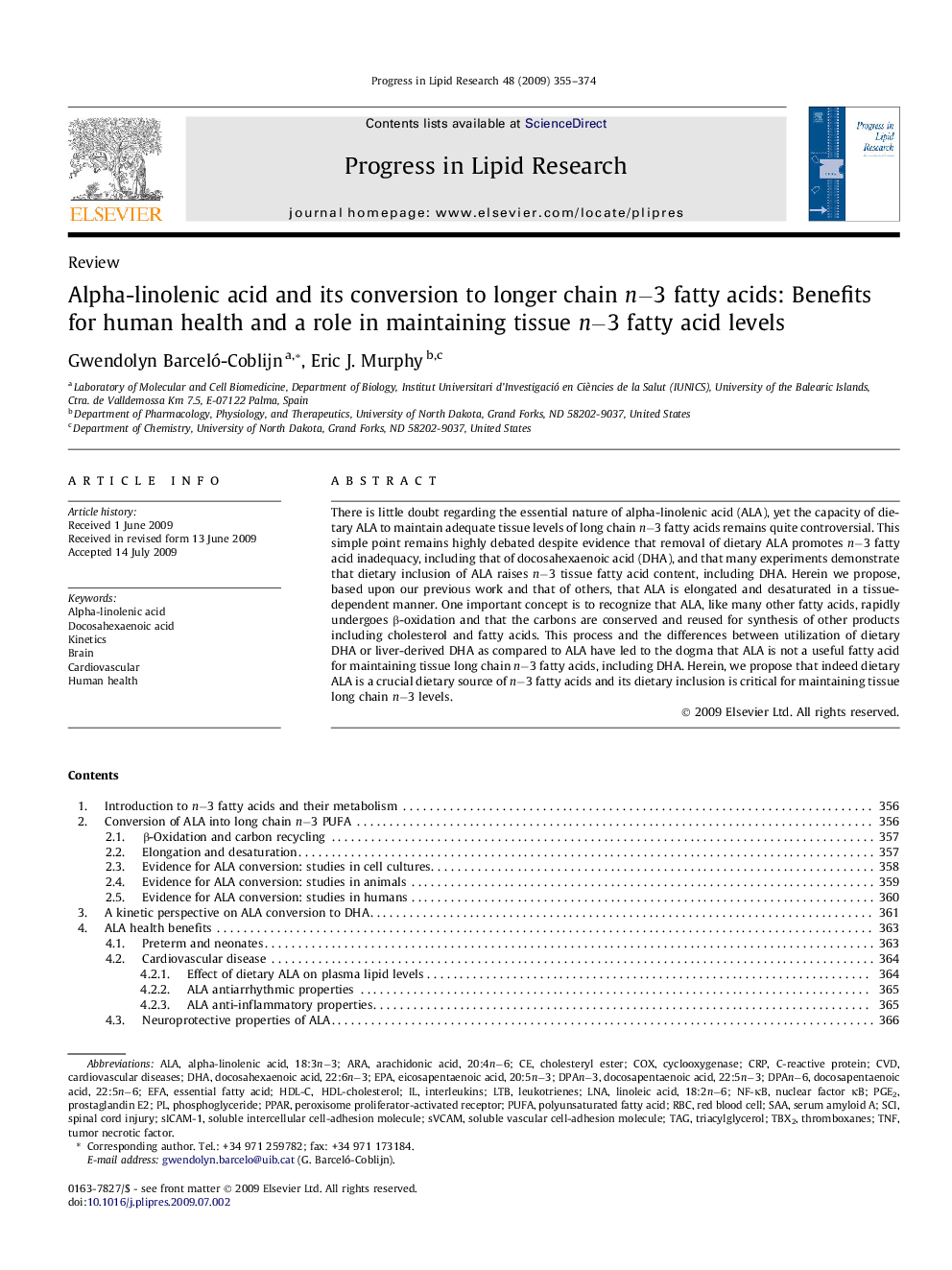| کد مقاله | کد نشریه | سال انتشار | مقاله انگلیسی | نسخه تمام متن |
|---|---|---|---|---|
| 2019287 | 1068573 | 2009 | 20 صفحه PDF | دانلود رایگان |

There is little doubt regarding the essential nature of alpha-linolenic acid (ALA), yet the capacity of dietary ALA to maintain adequate tissue levels of long chain n−3 fatty acids remains quite controversial. This simple point remains highly debated despite evidence that removal of dietary ALA promotes n−3 fatty acid inadequacy, including that of docosahexaenoic acid (DHA), and that many experiments demonstrate that dietary inclusion of ALA raises n−3 tissue fatty acid content, including DHA. Herein we propose, based upon our previous work and that of others, that ALA is elongated and desaturated in a tissue-dependent manner. One important concept is to recognize that ALA, like many other fatty acids, rapidly undergoes β-oxidation and that the carbons are conserved and reused for synthesis of other products including cholesterol and fatty acids. This process and the differences between utilization of dietary DHA or liver-derived DHA as compared to ALA have led to the dogma that ALA is not a useful fatty acid for maintaining tissue long chain n−3 fatty acids, including DHA. Herein, we propose that indeed dietary ALA is a crucial dietary source of n−3 fatty acids and its dietary inclusion is critical for maintaining tissue long chain n−3 levels.
Journal: Progress in Lipid Research - Volume 48, Issue 6, November 2009, Pages 355–374